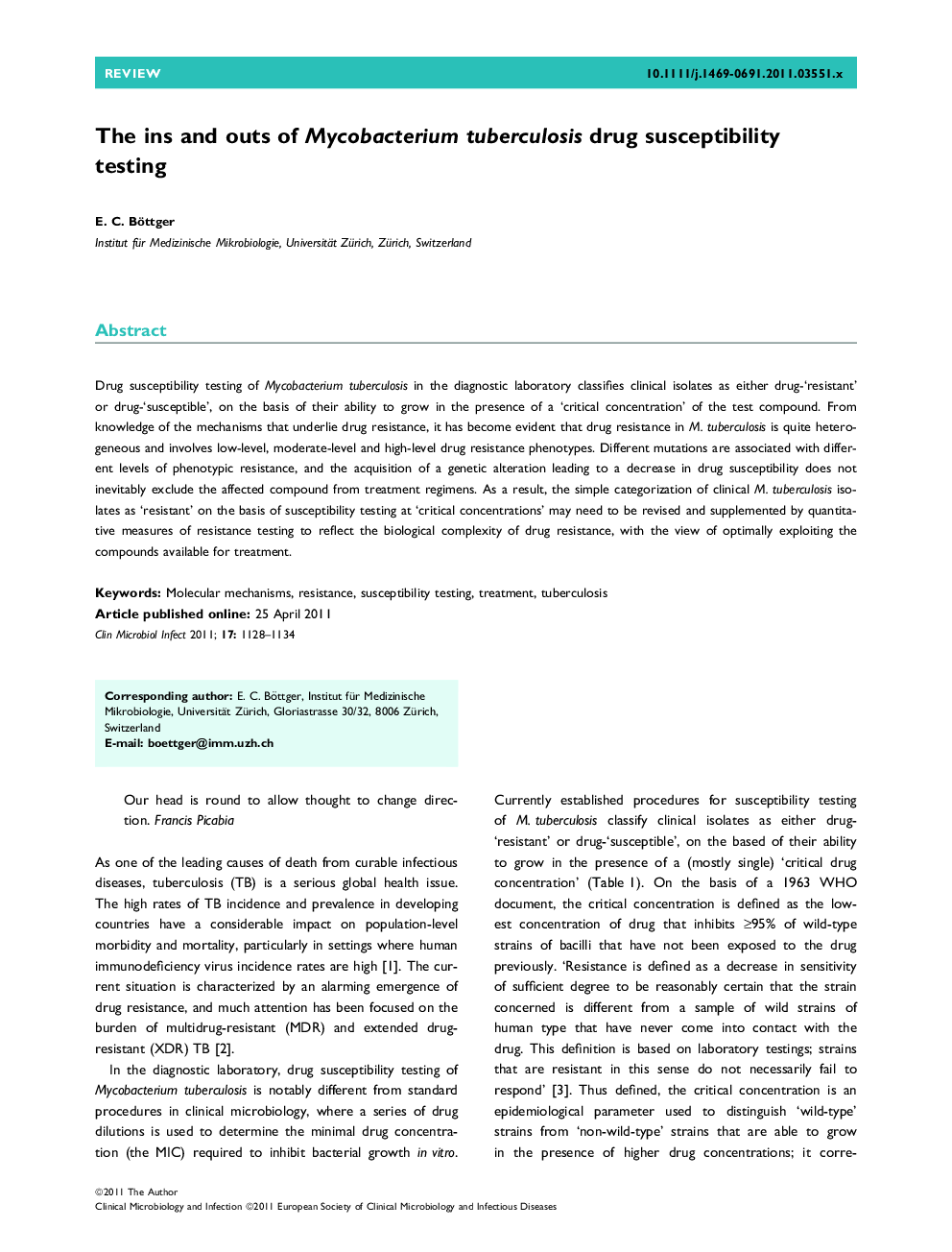| Article ID | Journal | Published Year | Pages | File Type |
|---|---|---|---|---|
| 3397015 | Clinical Microbiology and Infection | 2011 | 7 Pages |
Drug susceptibility testing of Mycobacterium tuberculosis in the diagnostic laboratory classifies clinical isolates as either drug-‘resistant’ or drug-‘susceptible', on the basis of their ability to grow in the presence of a ‘critical concentration’ of the test compound. From knowledge of the mechanisms that underlie drug resistance, it has become evident that drug resistance in M. tuberculosis is quite heterogeneous and involves low-level, moderate-level and high-level drug resistance phenotypes. Different mutations are associated with different levels of phenotypic resistance, and the acquisition of a genetic alteration leading to a decrease in drug susceptibility does not inevitably exclude the affected compound from treatment regimens. As a result, the simple categorization of clinical M. tuberculosis isolates as ‘resistant’ on the basis of susceptibility testing at ‘critical concentrations’ may need to be revised and supplemented by quantitative measures of resistance testing to reflect the biological complexity of drug resistance, with the view of optimally exploiting the compounds available for treatment.
